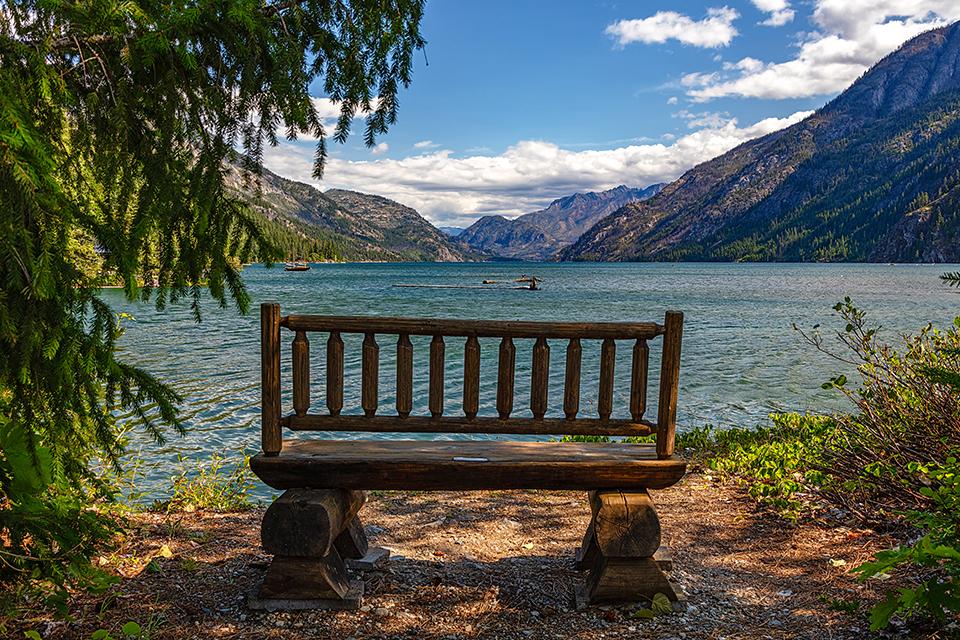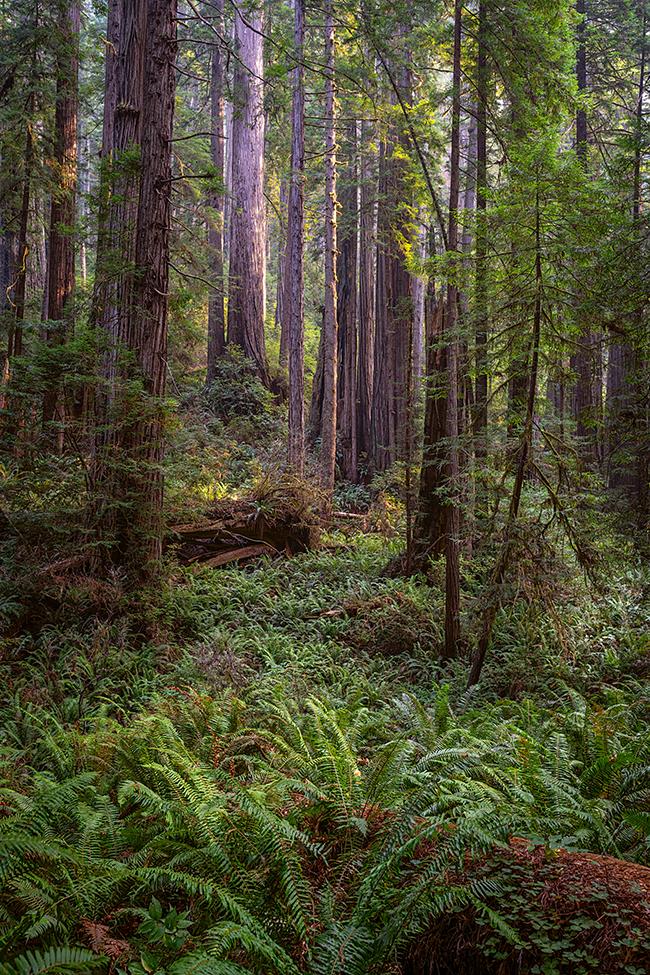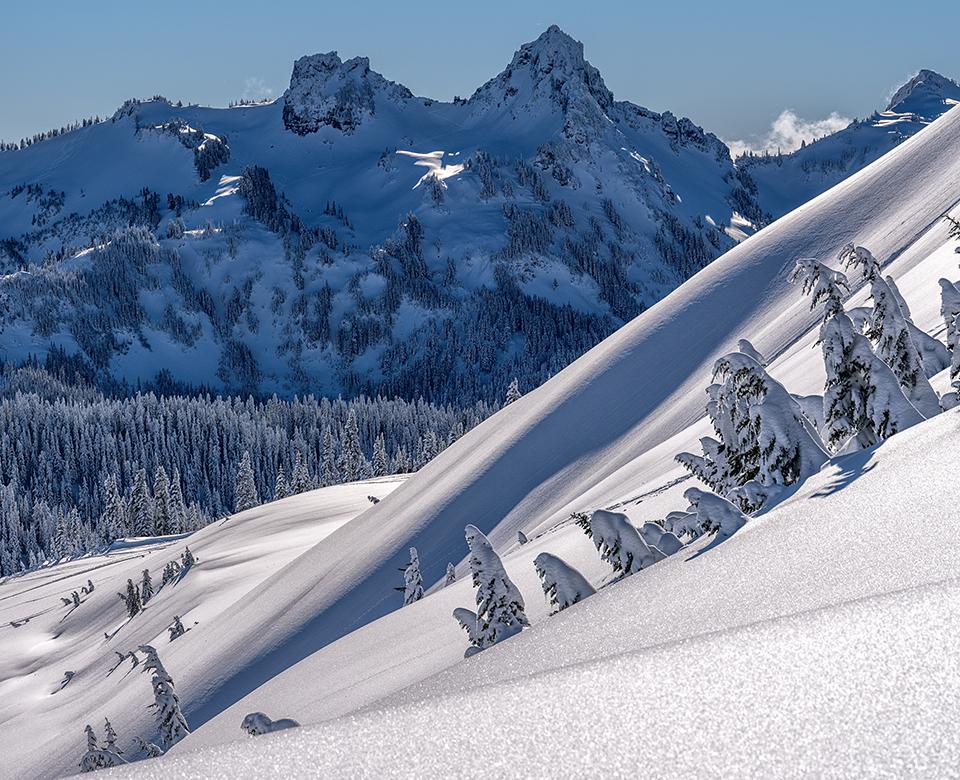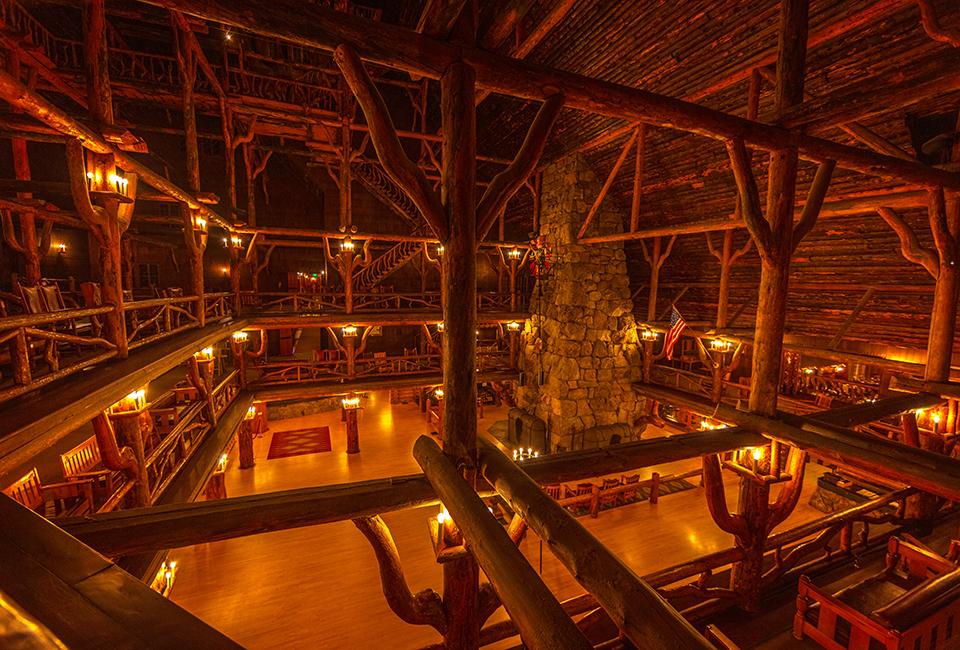
An intimate little place to sit and meditate, North Cascades National Park Complex / Rebecca Latson
How many times have you viewed someone’s national park images and one shot in particular pulled you into the composition? This shot invited you in. This is the power of an intimate composition.
An intimate shot extends an invitation to the viewer, but what really constitutes an intimate image? What are the photographic elements?
Forests make great intimate compositions. How many of you have roamed a redwood forest trail in Redwood National and State Parks? There, you wander within an environment populated by closely-spaced, skyscraper-tall trees atop a lush forest floor of green ferns on either side of the trail. The setting envelopes you and you alone into the shadowy green and brown forest domain. Passing cars are muted and you hear the intermittent drip of moisture from vegetation beating tempo to the monologue song of a single bird. Few to no people, less light and less feeling of wide-open space provide the intimacy to any forest interior.

Wandering through the forest interior at Prairie Creek Redwoods State Park, Redwood National and State Parks / Rebecca Latson
While few to no people create a sense of intimacy to a composition, the very opposite also creates that same type of composition. That’s right. People create intimacy and closeness by virtue of their humanity, even if they are sitting across the width of a wooden deck, a lobby, or a seat on a ferry from you. The photos below were captured during a couple of visits to the North Cascades National Park Complex. There is vast landscape, yes, but the photos themselves were captured from and include intimate settings of people attending a ranger-led talk overlooking the North Cascades and enjoying a sunny, breezy day on the small ferry to Stehekin. Humanity creates the intimate element in each image.

Ranger-led lessons at trail's end, North Cascades National Park / Rebecca Latson

Enjoying the scenery from the ferry on Lake Chelan, North Cascades National Park Complex / Rebecca Latson
A simple composition with few distractions is an intimate image. Landscapes such as the ones below captured at Arches National Park are intimate because of their few details and colors. Just red sandstone, a green tree, and a bit of white snow.

Green tree, red rock, Arches National Park / Rebecca Latson

A little tree at the South Window on a snowy winter morning, Arches National Park / Rebecca Latson
Mist, fog, and even wildfire smoke are great distraction eliminators as exemplified in the images of a misty scene at Elk Prairie in Prairie Creek Redwoods State Park and a smoke-hazed landscape in Glacier National Park.

Veiled in mist at Elk Prairie, Prairie Creek Redwoods State Park, Redwood National and State Parks / Rebecca Latson

Veiled in mist at Elk Prairie, Prairie Creek Redwoods State Park, Redwood National and State Parks / Rebecca Latson
Winter images make great intimate compositions. Snow, like forest interiors, mutes all other sounds. A good fresh snow image allows you to “hear” the silence and lets you feel like you are the only person around. In truth, depending upon where you hike within a winterized park, you might very well be the only person at that spot!

An intimate Alta Vista view of the winter landscape at Paradise, Mount Rainier National Park / Rebecca Latson

An intimate little winter scene at Paradise, Mount Rainier National Park / Rebecca Latson
Monochrome images impart a certain amount of intimacy to their subjects. “Distracting” colors are removed and replaced with gray, black, and white to create an instant sense of intimacy and a closer review of the textures and nuances of light and shadow previously concealed by Nature’s color palette.

Bison in a snowstorm at Upper Geyser Basin, Yellowstone National Park / Rebecca Latson

A lonely little tree bend beneath the snow burden, Mount Rainier National Park / Rebecca Latson
The addition of a foreground object lends a certain intimacy to an otherwise wide-angle landscape. Why? Because the eye focuses first on that nearby object, inviting the viewer to step in to the scene at that intimate little spot shared by the foreground subject.

A quiet, hazy morning at Lake McDonald, Glacier National Park / Rebecca Latson

Rime ice on a little tree at Upper Geyser Basin, Yellowstone National Park / Rebecca Latson
This is especially true if the foreground element is a familiar object, like the bench with a great view of Lake Chelan at Stehekin seen at the beginning of this article. Here’s this intimate little scene of a single bench half-hidden by trees, beckoning the hiker to sit and enjoy the view.
Landscapes are not the only producers of compositional intimacy. If you’ve ever photographed the interior of a room within a lodge, fort, or other building of the National Park System, you’ll feel that sense of interior intimacy. Part of this feeling is due to the warm lighting produced from electric lights and firelight, but there may be other elements within that intimate interior shot, too.

A corner seat with a view of the lobby, Old Faithful Inn, Yellowstone National Park / Rebecca Latson
The image above was captured one pre-dawn morning while wandering Old Faithful Inn at Yellowstone National Park. This is a wide-angle shot, yet it’s an intimate shot due to several features in addition to that warm lighting. The entire place is empty. There’s a comfy leather chair in the lower right corner inviting the viewer to sit for awhile and look out across the lobby. It is a spacious area at this time of the morning but the viewer has the place all to him- or herself. This is in direct contrast to my earlier paragraph about the presence of people adding a certain intimacy to an image. Interesting, isn’t it, how the presence or absence of people can make for an intimate shot, depending upon the other elements within the camera frame?
Photographing a view framed by a room window lends an intimacy to the scene. Part of the room included in the shot, along with the limitations of the scenic view created by the window size are key features creating that intimate atmosphere. Even the view from the window itself - chairs and a table on a small balcony - add a sense of intimacy to the composition.

A view from the room, North Cascades National Park Complex / Rebecca Latson
Sometimes a vertical image produces a more intimate feeling than a horizontal image. This is due to the “narrowing” of the scene versus a landscape photo. Of course, this is not always the case. It really depends upon the lens you use and the scene within which you frame your shot.

Icons of the park, Yellowstone National Park / Rebecca Latson
Speaking of narrowing the scene, cropping (removing extraneous parts) an image to bring the subject view closer to the eye adds a sense of intimacy. Below is the fenced grave of 45-year-old Levi H. Tower, interred within the Tower House Historic District of Whiskeytown National Recreation Area. The initial photo is a wide-angle view of the gravesite surrounded by a white picket fence. Cropping some of the shot created a closer view to the one grave within the enclosure. While perhaps not the kind of invitation a viewer might desire, the cropped image does nonetheless produce a more intimate look at this lonely grave, possibly even making it less lonely with a portion of fenced area removed.

Levi Tower gravesite, Whiskeytown National Recreation Area / Rebecca Latson

You’ve finished your national park photo trip and returned home to edit a few of those images. Here’s a nifty little post-processing trick to add intimacy: vignetting. Once a photographic dirty word because it meant you used a regular rather than thin-rimmed lens filter on your wide-angle lens, resulting in a photo with a black circle through which one viewed the landscape (sort of like seeing objects at the end of a tunnel), vignetting is now an attractive technique applied to some photos, judiciously darkening the edges to emphasize attention to the subject. There are even sliders and presets allowing the photographer to dial the desired percentage of vignette shade. Below are before and after shots of a forest trail with a light amount of vignette added.

A morning walk along the trail in Lady Bird Johnson Grove (original), Redwood National and State Parks / Rebecca Latson

A morning walk along the trail in Lady Bird Johnson Grove (vignette added), Redwood National and State Parks / Rebecca Latson
Here's something else you should remember: photography is a subjective art. You may look at the images here and think to yourself “I see nothing I’d call ‘intimate’ in any of these shots.” I’ve certainly perused various blogs about intimate landscapes and there were instances when I could not see anything intimate about those landscape examples at all. Others might look at these images and indeed see what I set out to explain. In truth, the best examples of intimate compositions will come from your own cameras when you take these suggestions and try them out for yourself within a unit of the National Park System. You’ll come away with shots inviting your friends, family, co-workers, and fans to step right on in to your own intimate imagery.

Come on out for a night on the ice rink, Yellowstone National Park / Rebecca Latson


